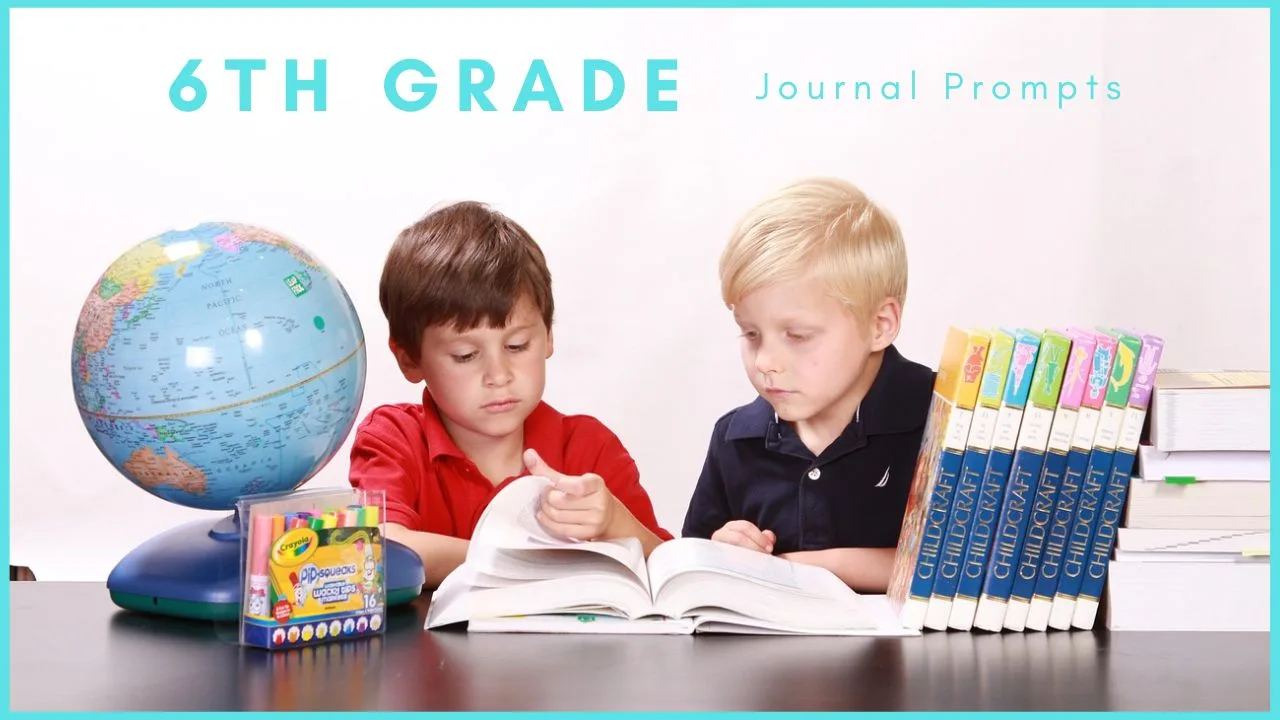Journaling is a popular and effective way to explore one’s creativity. However, sometimes it can be challenging to come up with writing prompts that inspire new ideas and encourage fresh perspectives. This is where creativity journal prompts come in handy. These prompts can help individuals tap into their creative side and explore new dimensions of themselves.
Creativity journal prompts can introduce variety to one’s journaling experience. They can encourage individuals to think more creatively and approach things from different angles. These prompts can also provide topics or themes that help individuals explore fresh perspectives and gain new insights into themselves. By using creativity journal prompts, individuals can ignite their daily creativity and unlock their full creative potential.
Whether you are an experienced writer or new to journaling, creativity journal prompts can be a valuable tool for exploring your creativity and gaining new insights into yourself. With so many options available, there is sure to be a creativity journal prompt that resonates with you and inspires you to think outside the box.
Getting Started with Creativity Journal Prompts
Journaling is a great way to explore creativity, gain insights, and reflect on one’s thoughts and experiences. It can help improve writing skills, boost self-awareness, and provide a platform for generating new ideas. Here are some basics to get started with creativity journal prompts.
Understanding the Basics of Journaling
Journaling involves writing down one’s thoughts, feelings, and experiences. It can be done using pen and paper or digital tools. Journaling can be done in various ways, such as free writing, bullet journaling, or using prompts. Creativity journal prompts are designed to stimulate the imagination and encourage new ideas.
Choosing the Right Tools and Materials
Choosing the right tools and materials can make a big difference in the journaling experience. A good quality pen and paper can help make writing more enjoyable and satisfying. A notebook or journal with a cover that inspires creativity can also help. Digital tools such as apps or software can be useful for those who prefer typing or want to keep their journal private.
Establishing a Journaling Routine
Establishing a journaling routine can help make it a habit and ensure consistency. It can be helpful to set aside a specific time of day or week for journaling. Starting with a few minutes a day and gradually increasing the time can help make it a part of one’s daily routine. It’s also important to find a quiet and comfortable space to write.
Journaling can be a valuable tool for exploring creativity and generating new ideas. By understanding the basics of journaling, choosing the right tools and materials, and establishing a journaling routine, one can develop a practice that helps cultivate creativity and self-awareness.
45 Creativity journal prompts
Here are 45 creativity journal prompts to inspire your imagination and spark new ideas:
- What would you create if you had unlimited resources?
- Imagine a day in the life of your favorite fictional character.
- Write a letter from the perspective of your future self.
- Describe your dream home in vivid detail.
- Invent a new holiday and explain how it’s celebrated.
- Create a character with an unusual job and write about their day.
- If you could design a city, what unique features would it have?
- Sketch or describe an invention that could change the world.
- Write a short story that starts with a mysterious message in a bottle.
- Imagine you have a superpower for a day. What is it and what do you do?
- Describe a magical place that only exists in your imagination.
- If you could talk to animals, what would you ask them?
- Write a poem about the view from an airplane window.
- Invent a new cuisine and describe its flavors and dishes.
- Imagine a secret society and its purpose. Who are its members?
- Create a myth or legend about a natural phenomenon.
- Describe the most beautiful thing you can imagine.
- If you could bring a fictional gadget to life, what would it be?
- Write a dialogue between the sun and the moon.
- Imagine a world where everyone has a personal soundtrack. What’s yours?
- Create a new sport and explain the rules.
- Design a theme park based on your favorite book or movie.
- Write about a journey to the center of the earth.
- Imagine a new form of communication that surpasses language.
- Invent a new genre of music and describe its essence.
- Describe an art piece you’d create that could evoke strong emotions.
- If you could transform into any creature, what would it be and why?
- Write a short fairy tale with a twist.
- Imagine a day in the life of an object in your room.
- Create a utopian society. What are its principles?
- Write about a character who can travel through paintings.
- If you could live in any era of history, when would it be and why?
- Describe a festival in honor of the stars and the night sky.
- Invent a new form of art and explain how it’s created.
- Write a story set in a world where dreams are currency.
- Imagine a device that can record and play back dreams. What are the implications?
- Create a language and write a simple conversation in it.
- Design a fashion line inspired by nature.
- Write about a character who can change colors with their emotions.
- Imagine a world where time flows differently. How does it affect life?
- Describe the adventures of a character who lives in a floating city.
- Invent a plant with unique properties and describe its uses.
- Write a story about a library where the books can talk.
- Imagine you’re an explorer discovering a new planet. What do you find?
- Create a character who has the job of crafting new constellations.
Exploring Creative Journaling Techniques
Creative journaling is a great way to express oneself and explore the imagination. There are many techniques that can be used to enhance the creative process of journaling. Here are some techniques that can be used to explore creative journaling.
Art and Visual Journaling
Art and visual journaling are great techniques to explore creativity. Art journaling involves using visual elements such as drawings, paintings, and collages to express oneself. Visual journaling is a form of journaling that involves using images, photographs, and other visual elements to express oneself. Art and visual journaling can be used to explore different creative ideas and projects.
Writing Prompts to Spark Imagination
Writing prompts are great techniques to spark the imagination. Writing prompts can be used to explore different creative ideas and projects. Writing prompts can be used to explore different writing styles such as poetry, prose, and creative writing. Writing prompts can also be used to explore different themes such as love, nature, and relationships.
Incorporating Poetry and Prose
Poetry and prose are great techniques to explore creativity. Poetry can be used to express oneself in a concise and powerful manner. Prose can be used to express oneself in a more descriptive and narrative manner. Poetry and prose can be used to explore different creative ideas and projects. Poetry and prose can also be used to explore different themes such as love, nature, and relationships.
Creative journaling is a great way to express oneself and explore the imagination. There are many techniques that can be used to enhance the creative process of journaling. Art and visual journaling, writing prompts, and incorporating poetry and prose are some of the techniques that can be used to explore creative journaling.
Overcoming Common Creative Blocks
Creativity is a powerful tool that can help people express themselves, solve problems, and achieve their goals. However, many people struggle with creative blocks that prevent them from tapping into their full potential. In this section, we’ll explore some common creative blocks and provide practical tips for overcoming them.
Dealing with Fear and Self-Doubt
Fear and self-doubt are common barriers to creativity. When people are afraid of failure or rejection, they may avoid taking risks or trying new things. Similarly, when people doubt their own abilities, they may feel discouraged or unmotivated to create.
One way to overcome fear and self-doubt is to practice gratitude. By focusing on the positive aspects of their lives, people can shift their mindset from one of scarcity to one of abundance. They can also set boundaries to protect their time and energy, which can help them feel more confident and in control.
Moving Past Creative Plateaus
Creative plateaus are another common barrier to creativity. When people feel stuck or uninspired, they may struggle to come up with new ideas or make progress on their projects. To overcome creative plateaus, people can try changing their habits or routines. For example, they can take a break from their usual creative pursuits and try something new, such as painting or dancing. They can also seek out inspiration from other sources, such as nature or art.
Harnessing Emotions for Creativity
Emotions can be both a source of inspiration and a barrier to creativity. When people are feeling overwhelmed or stressed, they may find it difficult to focus on their creative pursuits. However, when people are feeling happy or excited, they may be more motivated to create.
One way to harness emotions for creativity is to practice mindfulness. By being present in the moment and observing their thoughts and feelings without judgment, people can gain insight into their emotional states and use that insight to fuel their creativity. They can also try expressing their emotions through their creative pursuits, such as writing or drawing.
There are many strategies for overcoming creative blocks and tapping into one’s full creative potential. By practicing gratitude, changing habits, and harnessing emotions, people can unlock their creativity and achieve their goals.
Deepening Personal Growth Through Journaling
Journaling is a powerful tool that can help individuals deepen their personal growth. By reflecting on their thoughts, feelings, and experiences, they can gain a better understanding of themselves and their place in the world. In this section, we will explore how journaling can help individuals reflect on their relationships and life lessons, set goals and envision the future, and cultivate gratitude and a positive mindset.
Reflecting on Relationships and Life Lessons
Journaling can be a valuable tool for reflecting on relationships and life lessons. By writing about their experiences with family, friends, and romantic partners, individuals can gain insights into their own behavior and patterns. They can also reflect on the lessons they have learned from their experiences and use this knowledge to make better choices in the future.
Setting Goals and Envisioning the Future
Journaling can also help individuals set goals and envision the future. By writing about their personal values and vision, individuals can gain clarity on what they want to achieve in their lives. They can also reflect on their progress towards their goals and identify any obstacles that may be holding them back.
Cultivating Gratitude and Positive Mindset
Finally, journaling can help individuals cultivate gratitude and a positive mindset. By writing about the things they are grateful for, individuals can shift their focus from what they lack to what they have. This can lead to increased happiness and resilience in the face of challenges.
Journaling can be a powerful tool for personal growth. By reflecting on their relationships and life lessons, setting goals and envisioning the future, and cultivating gratitude and a positive mindset, individuals can gain a deeper understanding of themselves and their place in the world.
Frequently Asked Questions
What do you write in a creative journal?
A creative journal can be used to write about anything that inspires you. You can write about your dreams, your goals, your fears, your successes, your failures, your hopes, your passions, and anything else that comes to mind. The most important thing is to write honestly and from the heart.
What are some creative writing prompts?
There are many creative writing prompts that can help you get started with your journaling. You can write about a favorite childhood memory, describe your ideal day, write a letter to your future self, or create a list of things you are grateful for. The key is to find prompts that resonate with you and inspire your creativity.
What are some good journaling prompts?
Good journaling prompts are those that encourage you to reflect on your thoughts and feelings. Some examples of good prompts include writing about a time when you overcame a challenge, describing a place that makes you feel calm and peaceful, or writing a letter to someone who has had a significant impact on your life.
How do I make my journal creative?
There are many ways to make your journal creative. You can use different colors and styles of pens, add stickers or other embellishments, or include drawings or sketches. You can also experiment with different writing styles, such as poetry or free-writing, to add variety and interest to your journal.
How can one incorporate creativity into daily journaling?
To incorporate creativity into daily journaling, try setting aside a few minutes each day to brainstorm ideas for your journal. You can also experiment with different writing styles, such as poetry or free-writing, to add variety and interest to your journal. Try to write about different topics each day to keep your journal fresh and engaging.
What are some engaging prompts for enhancing creativity in adults?
Some engaging prompts for enhancing creativity in adults include writing about a time when you took a risk and it paid off, describing a place that inspires you, or writing a letter to your younger self. The key is to find prompts that resonate with you and inspire your creativity.
Can you suggest creative journal prompts suitable for middle school students?
Some creative journal prompts suitable for middle school students include writing about a favorite hobby, describing a place that makes them feel happy, or writing a letter to their future self. The key is to find prompts that resonate with them and encourage them to explore their thoughts and feelings.
What types of prompts inspire creative thinking?
Prompts that inspire creative thinking are those that encourage you to think outside the box and explore new ideas. Some examples of creative prompts include writing a story from a unique perspective, describing a place that does not exist, or creating a list of unusual or unexpected things that make you happy.
What are some fun and creative prompts for journal writing?
Some fun and creative prompts for journal writing include writing about a time when you laughed so hard you cried, describing a dream you had, or writing a letter to your favorite fictional character. The key is to find prompts that inspire you and encourage you to explore your imagination.
How can high school students benefit from creative journal prompts?
High school students can benefit from creative journal prompts by using them to explore their thoughts and feelings, develop their writing skills, and cultivate their creativity. Journaling can also be a helpful tool for managing stress and anxiety, improving self-awareness, and developing a sense of gratitude and appreciation for life.




